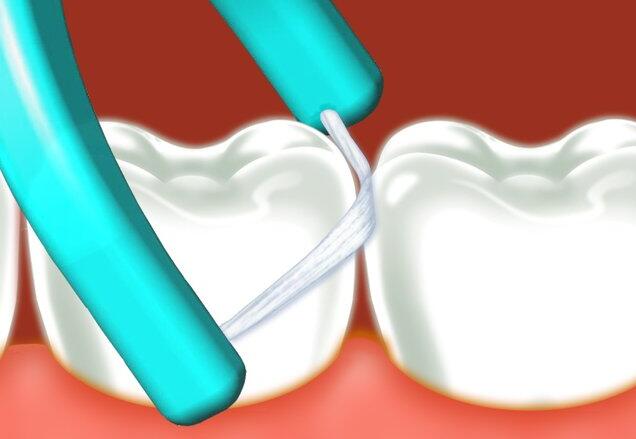The Environmental Working Group recommends against using dental floss made with PTFE. The group states that “Exposure to PFCs has been associated with kidney and testicular cancer, high cholesterol, abnormal thyroid hormone levels, pregnancy-induced hypertension and preeclampsia, obesity and low birth weight . . . . PFCs pollute water, are persistent in the environment and remain in the body for years. Leading manufacturers of PFCs have agreed to phase out some of these chemicals by the end of 2015, including PFOA, the most notorious, which used to be a key ingredient in making polymer. Unfortunately, there’s no evidence that the chemicals that have replaced PFOA are much safer.”

Dentists have been telling us for decades that the use of dental floss effectively removes plaque, a gel-like substance made of bacteria that forms on and between teeth, as well as below the gum line. It has been thought to be an important part of our dental hygiene routine because normal brushing doesn’t remove all the the plaque. And if it is not removed, it hardens and can cause gingivitis or an inflammation of the gums. Eventually, gums begin to separate from the teeth, forming “pockets” that can become infected, ultimately destroying bone and resulting in tooth loss. Flossing disturbs the bacteria, stopping it before it can create plaque. Various studies have shown that, aside from tooth loss, gum disease is a big risk factor for Alzheimer’s and memory issues.
However, doubt has recently been cast on the usefulness of dental flossing to effectively remove plaque. A 2015 investigation by the news organization the Associated Press (AP) involved Freedom of Information requests to the US Department for Health and Human Services (HHS) asking for the research leading to its recommendation in favor of flossing. The HHS subsequently quietly dropped the advice, and Public Health England has also said that it will be reviewing its own guidance on flossing. In a letter to the AP, the US government acknowledged the effectiveness of flossing had never been researched. That seems not to be totally true, because AP looked at twenty-five studies comparing combinations of various toothbrushes and floss and found that the evidence for flossing is “weak, very unreliable,” of “very low” quality, and carries “a moderate to large potential for bias.”
Even if you decide to continue to continue to floss for now, you are right to question which type of floss to use, for both your health and that of the environment and the rest of civilization.
Some dental floss is made from nylon, a synthetic fiber derived from petroleum products. Petroleum is a non-sustainable resource, the extraction and production of which has had major detrimental impacts on the soil, ground water, surface water, and ecosystems. Nylon takes about fifty years to break down in the environment, and discarded floss (especially when it’s thrown in the toilet) can clog sewers, pollute lakes, and harm wildlife. Floss is also often coated with a petroleum-based wax. Americans buy over three million miles of dental floss every year, so this is substantial damage.
Floss made from polytetrafluoroethylene (PTFE) is becoming increasingly popular – and is marketed to dental offices to be given out to clients. Many people like it because it doesn’t shred and is easier to “glide” between tight teeth and around braces.
Other ingredients can be flavors and additives that vary with the manufacturer and can include fluoride. The summary of one dental floss patent reads: “Porous, high strength (PTFE) dental floss is coated with micro-crystalline wax. If desired, the floss may also incorporate one or more active tartar control, anticaries, antiplaque and/or antibacterial actives and/or dentally acceptable agents such as polishing and abrasive agents, coolants, flavorants and/or coagulants.”
Those can all be problematic for our health, but PTFE is the biggest problem, in my opinion. It also provides the coating in non-stick cookware, under its DuPont trade name polymer. Although the main concern over polymer has been the release of toxins when cookware is overheated, a chemical used in its manufacture, called perfluorooctanoic acid (PFOA), creates other problems. PTFE belongs to a class of perfluorochemicals (PFCs), which have become global pollutants in a short period of time. They have been found in our cities, on remote islands, in forests, and in polar regions, showing up in drinking water and wildlife.
Studies also show that nearly all people, regardless of age, have some PFCs in their blood. They have been found in samples of human breast milk, and in the blood of newborns.
Post time: Feb-01-2020

